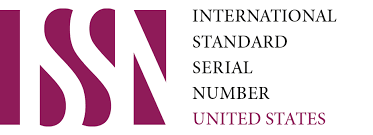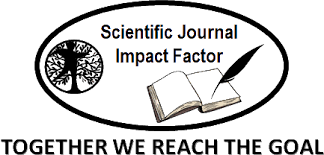Nonverbal Communication Strategies Used in Virtual Interpersonal Communication
DOI:
https://doi.org/10.62480/tjpch.2024.vol35.pp1-4Keywords:
Paralinguistics, virtual communication, nonverbal meansAbstract
In world linguistics, particularly in Uzbek linguistics, the study of nonverbal means of verbal communication (various states of voice, gestures, facial expressions, and body movements) has been conducted in various aspects of the language. The realities of modern life show that communication in today's world is characterized by extreme freedom, unpredictability, and distance from language rules. In this context, the role of nonverbal means has increased more than ever, and they have begun to carry a significant pragmatic load. Especially their use in virtual communication is often overlooked by researchers. This article provides a brief overview of virtual communication, its study level, and its importance. It also analyzes the nonverbal forms used in communication. Furthermore, the linguistic and nonlinguistic connections, their mutual influences and contradictions, and the opportunities to create a certain image are discussed. The characteristics of nonverbal means in the communication process are also highlighted. Additionally, the communication process among Uzbeks and the forms of interaction they use are given. The results of a survey on gender-specific communication traits in Uzbek culture are also presented.
References
Aripova, A. Linguistic and Stylistic Means of Oratory Speech: Candidate of Philological Sciences
Dissertation. – Tashkent, 2002. – 186 pages.
Akbarova, Z. Forms of Address in the Uzbek Language and Their Linguistic Study: Candidate of
Philological Sciences Dissertation. – Tashkent, 2007. – 135 pages.
Kolshansky, G.V. Paralinguistics. – Moscow: Nauka, 1974.
Saidkhonov, M. Communication and Gestures. – Tashkent: Fan, 2008. – 83 pages.
Iskandarova, Sh. Forms of Communication in Uzbek Speech Habits: Candidate of Philological
Sciences Dissertation. – Samarkand, 1993. – 140 pages.
Muminov, S. Social and Linguistic Characteristics of Uzbek Communication Behavior: Doctor of
Philological Sciences Dissertation. – Tashkent, 2000. – 236 pages.
Gorelov, I.N. Non-verbal Components of Communication. – Moscow: Knizhny Dom "LIBROKOM",
– 112 pages.
Kreidlin, G.E. Non-verbal Semiotics: Body Language and Natural Language. – Moscow: Novoe
Literaturnoe Obozrenie, 2002. – 592 pages.
Kreidlin, G.E. Men and Women in Non-verbal Communication. – Moscow: Languages of Slavic
Cultures, 2005. – 224 pages.
See: Nurmonov, A. Expression with Paralinguistic Means in Incorning // Uzbek Language and
Literature, 1979. – No. 1.;
Nurmonov, A. Paralinguistic Means of the Uzbek Language. – Andijan, 1980. – 24 pages.
Saidkhonov, M. Non-verbal Means and Their Expression in Uzbek: Candidate of Philological
Sciences Dissertation. – Tashkent, 1993.
Nurmonov, A., Saidkhonov, M. Paralinguistic Means of Expression of Affirmation and Negation //
Soviet Turkology. 1986, No. 5. – pp. 61 – 69.;
Saidkhonov, M. Semantics of Gesture Verbs // Uzbek Language and Literature. 1998, No. 1. – pp. 38
– 41.
Downloads
Published
Issue
Section
License

This work is licensed under a Creative Commons Attribution-NonCommercial 4.0 International License.
User Rights
Under the Creative Commons Attribution-NonCommercial 4.0 International (CC-BY-NC), the author (s) and users are free to share (copy, distribute and transmit the contribution).
Rights of Authors
Authors retain the following rights:
1. Copyright and other proprietary rights relating to the article, such as patent rights,
2. the right to use the substance of the article in future works, including lectures and books,
3. the right to reproduce the article for own purposes, provided the copies are not offered for sale,
4. the right to self-archive the article.












